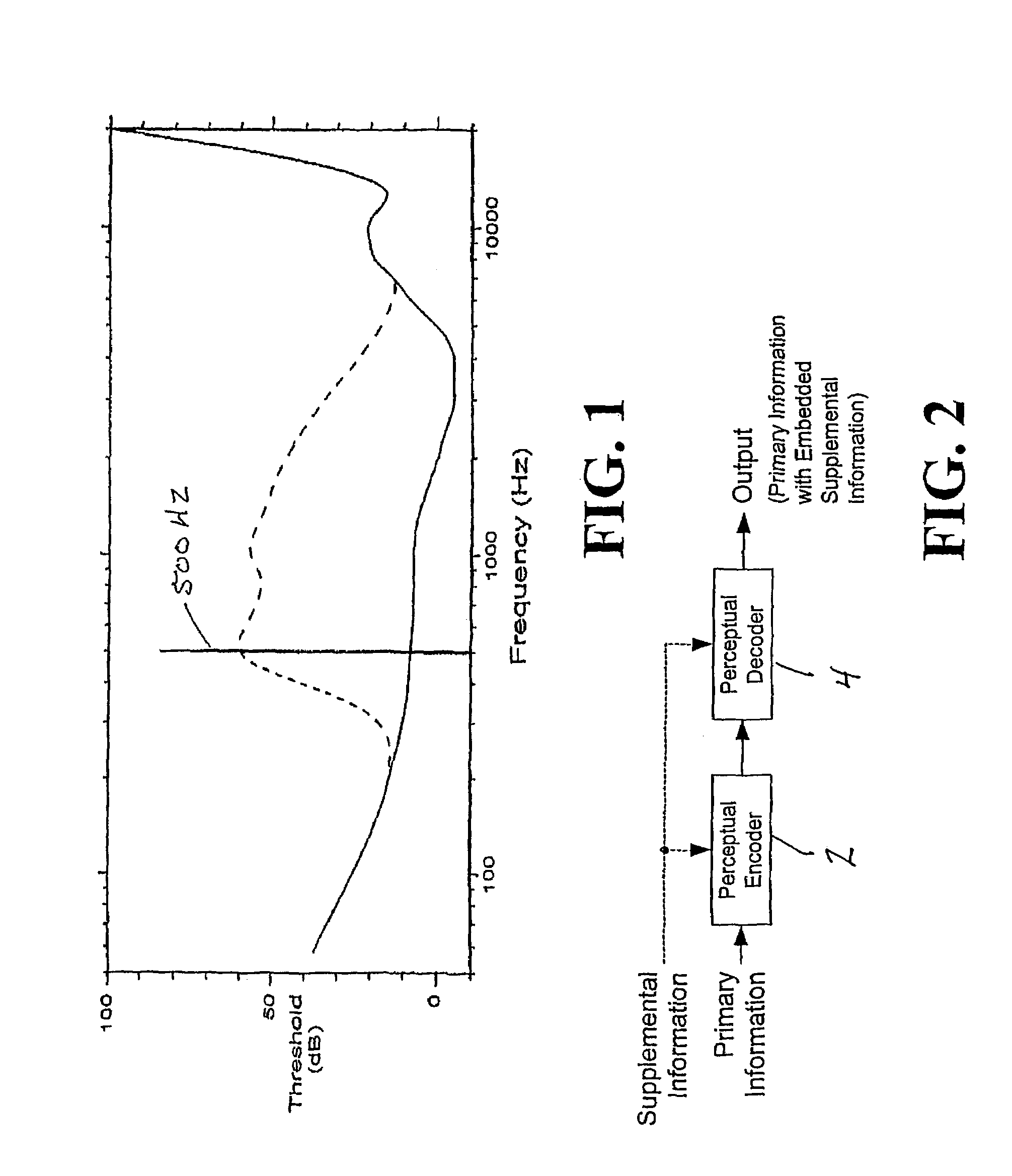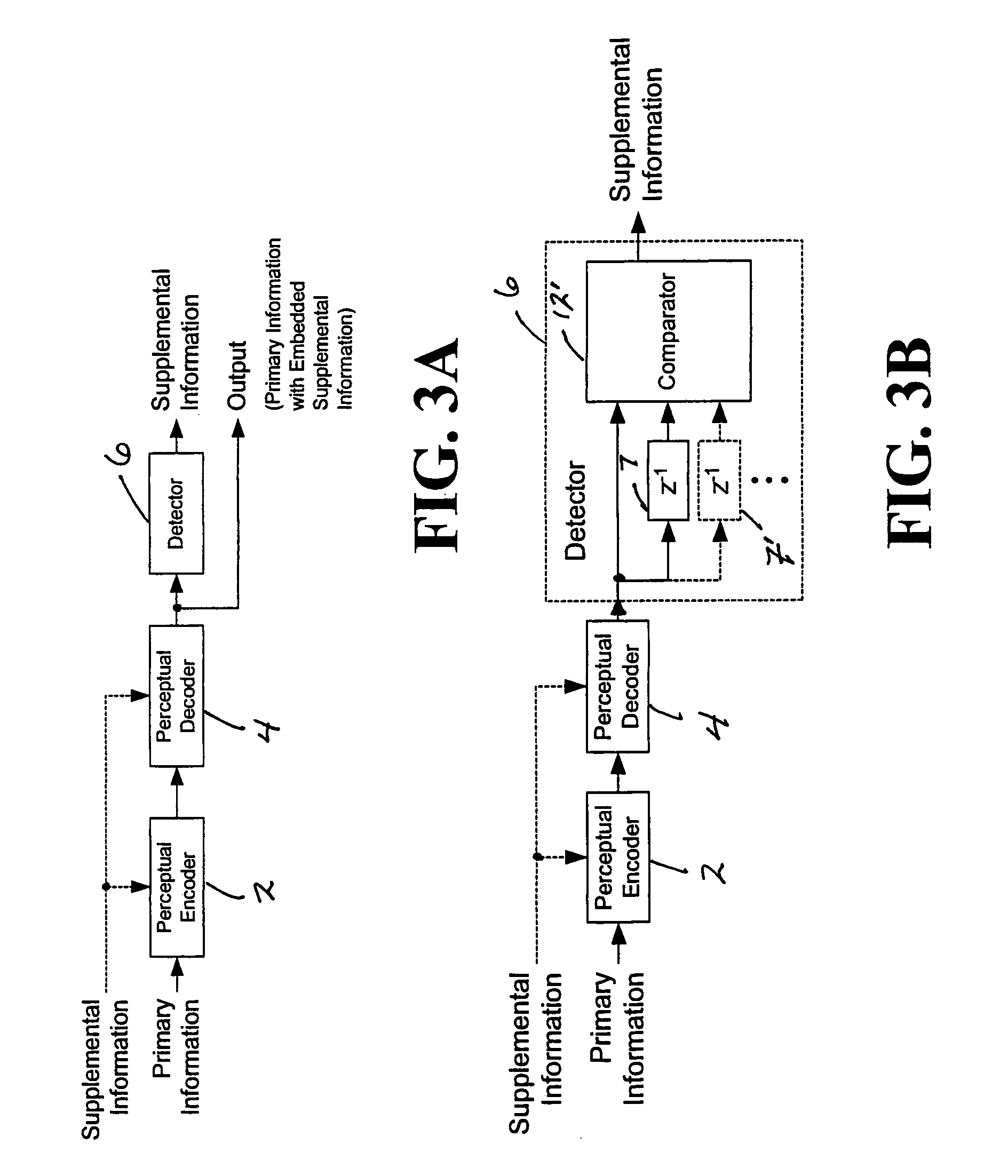Modulating one or more parameters of an audio or video perceptual coding system in response to supplemental information
a perceptual coding system and audio or video technology, applied in the field of steganography, can solve the problems of simple audio processing, easy to corrupt hidden signals, and easy to destroy data signals, and achieve the effects of minimizing the perceptibility of embedded signals, improving the imperceptibility of watermarks, and maximizing strength
- Summary
- Abstract
- Description
- Claims
- Application Information
AI Technical Summary
Benefits of technology
Problems solved by technology
Method used
Image
Examples
Embodiment Construction
[0100]FIG. 2 is a functional block diagram illustrating the basic principles of the present invention. A perceptual encoder function 2 and a perceptual decoder function 4 comprise a perceptual coding system. Primary information, such as audio or video information, is applied to the perceptual encoder function 2. The encoder function 2 generates a digital bitstream that is received by the perceptual decoder function 4. One or more parameters in the encoder function and / or the decoder function are modulated in response to supplemental information (e.g., a watermark signal or sequence). Because supplemental information may be applied either to the encoder function or to the decoder function or to both, dashed lines are shown from the supplemental information to the encoder function and to the decoder function, respectively. The output of the perceptual decoder function is primary information with embedded supplemental information. The supplemental information may be detectable in the d...
PUM
 Login to View More
Login to View More Abstract
Description
Claims
Application Information
 Login to View More
Login to View More - R&D
- Intellectual Property
- Life Sciences
- Materials
- Tech Scout
- Unparalleled Data Quality
- Higher Quality Content
- 60% Fewer Hallucinations
Browse by: Latest US Patents, China's latest patents, Technical Efficacy Thesaurus, Application Domain, Technology Topic, Popular Technical Reports.
© 2025 PatSnap. All rights reserved.Legal|Privacy policy|Modern Slavery Act Transparency Statement|Sitemap|About US| Contact US: help@patsnap.com



